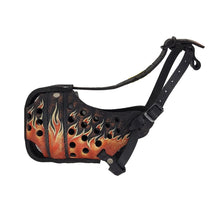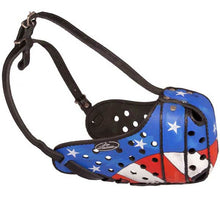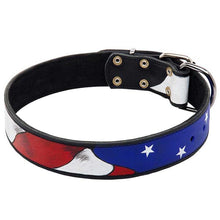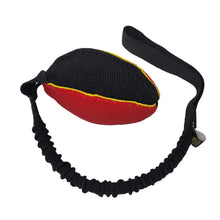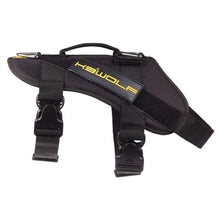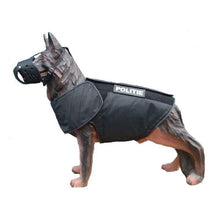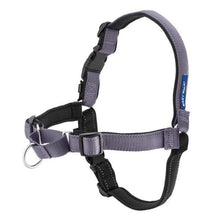5 Controversial Training Tools, Life Savers or Torture Devices?
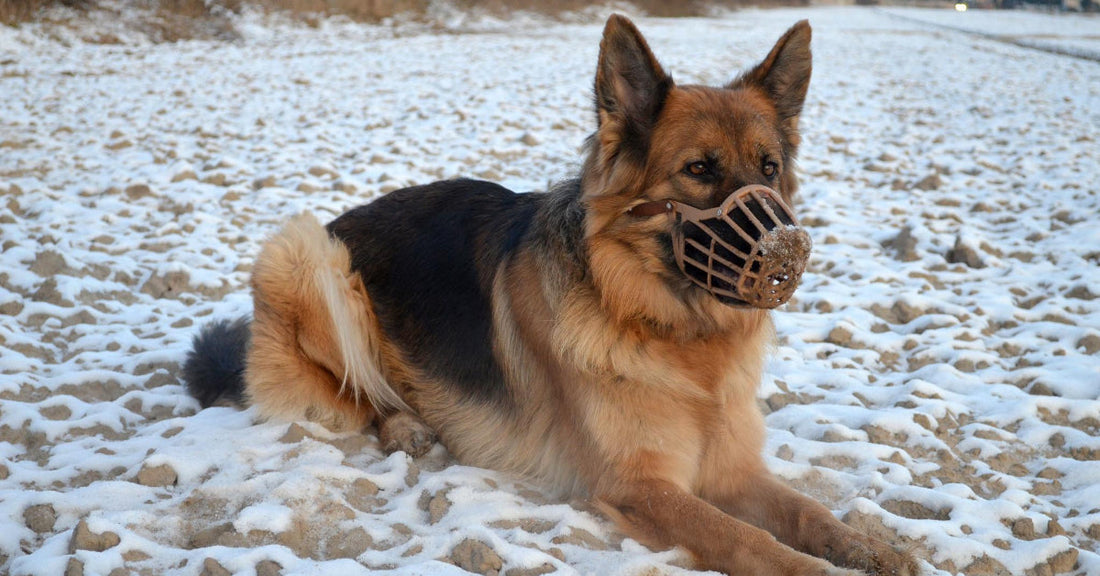
In every dog group, especially German Shepherd Dog groups, you will see on a daily basis people verbally sparring or downright attacking others over the use of "Cruel" training practices and tools. So let's go over the training tools that cause the most controversy, how they work, how they're used, and whether or not they should be used, or if they're torture devices that should be banned.
First up at #1: Muzzles.
Muzzles are a device with multiple uses, with the main purpose of keeping a dog from biting people, other dogs etc. But did you know in police, military, and protection training, special muzzles called "agitation muzzles" are used to actually teach dogs who to target a bite and to test the dog and teach them to use their bodyweight when apprehending bad guys? Well, now you know!
Are muzzles torture devices? Yes, they are. If you leave them on for a several weeks, I'm sure it'll cause a nasty rub on the snout. But if you use them with common sense and only put it on during times you know the dog will need it, then no, muzzles are perfectly fine. People have this weird stigma about muzzles, but the truth is, not every dog likes every dog, or all people, and that's fine. If someone is so wrapped up in nonsensical stigma that they'd rather a dog attack another dog, or an innocent person over wearing a muzzle; they're the problem, not the muzzle, and not the owner who is trying to be a responsible pet owner.

2: Flat Collars. A flat collar is a normal nylon or leather collar, often used to mount dog tags or to take a puppy or trained adult dog on a walk.
Are flat collars torture devices? Yes, they are. Hundreds of dogs a year hang themselves by mistake by being back tied and jumping over a fence, or deck railing. Hundreds of dogs a year don't get a new collar, and as they grow, the flat collar embeds itself into the skin. Very cruel. But once again, if you use them with common sense, they're fine! You may think I'm exaggerating with this one, but I've literally seen people say that putting a collar on a dog's neck is animal cruelty, and that dogs should only be walked on a harness or gentle leader/halti.

Well, if flat collars made the list, let's point out the 2 collars people who are unfamiliar with dog training come for, for #3: fur savers/choke collars and prong collars. Are they torture devices? Yes, they are. Choke chains have grown imbedded into dog's necks when the size isn't changed as they grow. They've also probably hung more dogs up ending in death than flat collars. Prong collars, if not properly fitted and left on too long, can cause pressure sores (kind of like bed sores) because of the points of contact. But once again, those issues only arise when the owner is at fault out of neglect, or ignorance. And there's no excuse for either.
A fur saver is a very common tool, and can be used broadly in many ways. A prong collar has saved more dog's lives than any one dog training tool on this planet, bar none. Learning how to use one and using it correctly has turned dangerous, unmanageable dogs into well trained, perfectly behaved dogs. Just because things look scary or weird doesn't mean they're torture devices. They are only torture devices in the hands of neglectful people and people who do not care enough about their dogs to research.

Ear Taping is coming in at #4. It's a stretch to call tape a training tool, but it does train the ears to stand, right? Well, moving along.
Until recently, we had no idea this one was controversial. Ear taping is when a breed of dog has naturally erect ears, but they haven't come up near the end of teething aka 5 months. Ideally, a dog with good genetics would have ears up within the 5 month range at maximum. But even with good genetics, things happen. Taping is when you wrap the ears around foam, tape them so they're erect, and then build a bridge across the top to keep the ears in a naturalistic erect state. This gives the cartilage in the ears time to set so they'll stand erect when the tape is removed in a week or two (you will change out the material frequently, until the tape is permanently removed in a week or two).
This procedure includes skin safe tape, gauze, hair roller foam, and a popsicle stick to act as the bridge. It's not like when you see Doberman or Great Danes with their ears taped up. Danes and Doberman have their ears cut and shaped with a scalpel at a veterinarian's office, the edges stitched, and then they're taped up so they'll stand erect. If someone thinks that's cruel, I can see why they would think that. But with a German Shepherd, or Husky, or Cattle Dog? There's no cutting, no pain, no injury. It's just tape to support the ears until they stand on their own. Will a puppy find it annoying? Yes, most likely. Just like they found a collar annoying, or a vest, or dog boots if you've ever needed and used them, or any number of things people put on their dogs, including clothes and life vests.
Is it cruel? No, it isn't. Unlike the first 3, this one can't cause any pain. Even if you were negligent and left them on for too long, don't worry, the dog will take them out after a few scratches and headshakes.

And last but not least, #5: Remote Trainers aka electric collars. We're not talking about electric no-bark collars, or underground fencing ... which oddly enough get passes even though they give an electric simulation to a dog, just like a remote trainer does ... strange, isn't it?
Are they cruel torture devices? Yes, they are. They have 2 prongs to provide the stimulus. If left on for extended periods ... yes, once again, pressure sores and embedding issues. They can also be overused or used improperly and cause more problems than they cure. So this is definitely a "Find a professional trainer to help you" kind of deal. We have an article on picking a good trainer that's coming out around the same time as this article, so check around for it.
But once again, this tool being cruel is 100% the handler/owner's fault. With modern low-stim techniques, the corrections are much milder than using a flat collar to correct a dog with. "Put it on yourself if it's so safe!" Haha, listen, every dog trainer on this planet who has ever used a remote trainer has done this. More than once. We know exactly what it feels like. It can feel like the faintest touch of something brushing against you, or a tickle, or a tingle, all the way to what can be described as unpleasant, but not painful.
Therefore, if you're turning it up all the way when you have a dog with a soft temperament, that's unfair. That's torture. And that's your fault, not the tool. If you had it down to the tickle feeling levels, the dog would've understood what you were communicating to him without him being afraid.

Basically, to wrap everything up: don't leave training tools on your dog ... ever. They're for training. They're not jewelry that is left on all day, every day. We've also learned that neglectful, abusive, and ignorant people can cause a lot of pain with just about any tool, garment, or object that exists if you give them enough time. Lastly, we've learned that all of these tools are useful tools in a good dog trainer's tool bag. Just because someone is unfamiliar, or they look scary, or sound scary, doesn't mean they're torture devices. Even countries who have banned remote trainers and prong collars have exemptions for dogs owned by the government aka police service dogs and military working dogs. Oddly convenient, don't you think? It's almost like they're saying "These work great, but political pressure from people who have never used these tools drove us to ban them."
Keep an open mind, always consult a good trainer, stay safe, keep your dogs safe, and almost as important as those things: Don't forget to leave a like and share.
You may also like: What To Do If You Or Your Dog Are Attacked By Another Dog



